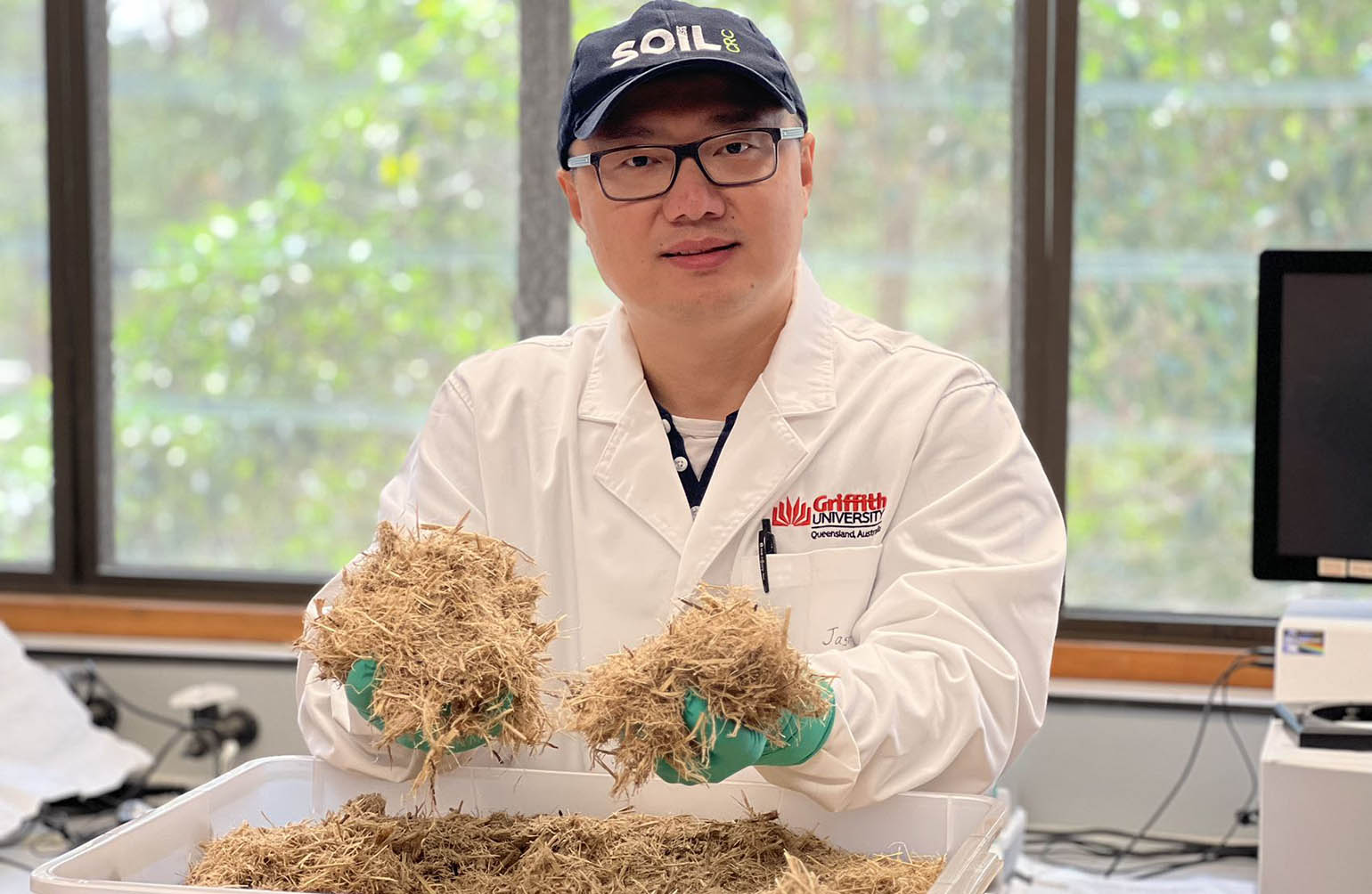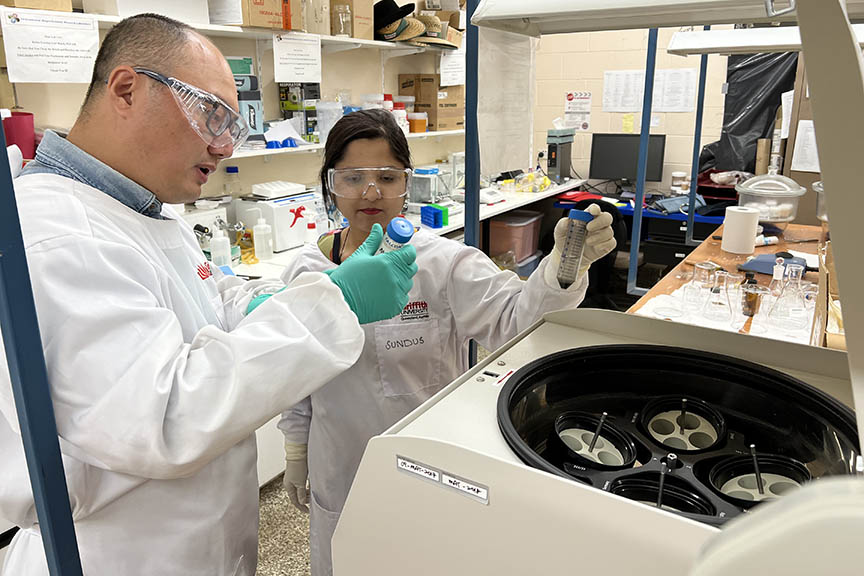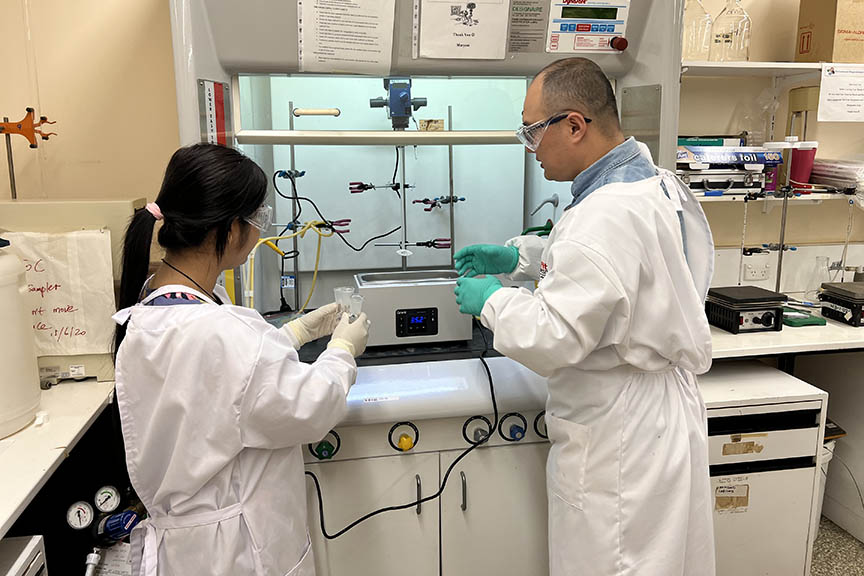Drought is an enduring feature of the agricultural landscape across Australia. The inability of soils to supply sufficient water reduces crop productivity. Retaining soil moisture in these harsh environments is key to maintaining soil and crop health.
Professor Chengrong Chen of Griffith University is leading a Soil CRC project to develop cost-effective, environmentally friendly moisture retention materials that will enable farmers to increase their soil’s productivity in dry conditions.
Professor Chen explained that commercially available water retention materials include surfactants which help reduce soil water repellence and improve soil wetting processes. However, the effectiveness and environmental risk of some of these materials is not yet known.
“The ‘New organic amendments for retaining soil moisture’ project is developing innovative, highly efficient and environmentally friendly moisture retention materials by evaluating, modifying and activating naturally occurring, locally available organic- and clay-based materials to provide cost-effective practical solutions,” Professor Chen said.
“Ultimately, we expect to develop a range of natural products that will enhance soil moisture capture and retention, and improve seed germination, crop establishment and farming activity under dry conditions.”
Project update
Now more than halfway through its three-year term, the project is delivering promising results and a range of important outputs.
The research team has collected various clay- and organic-based materials from locations across Australia and tested their water retention capacity. Based on the results, they are starting to identify locally available water retention materials for farmers to use on their soils.
Scientific paper for agriculture in drought-affected regions
Professor Chen and his team are writing a scientific paper characterising the physicochemical properties of several locally available commercial clay- and organic-based materials, which will provide a reference for agricultural activities in drought-affected regions of Australia.
Preparing and testing novel materials
A series of novel efficient water retention materials have been successfully prepared by chemically modifying some selected clay- and organic-based materials using highly hydrophilic components. The water retention performance of the prepared materials is significantly enhanced compared to the unmodified materials.
Creating cellulose-based materials
The project team has successfully extracted cellulose-based materials from organic waste and will now optimise this process to create novel cellulose-based water retention materials.
Next steps
Professor Chen said the project team will soon examine moisture retention and release characteristics of selected key clay- and organic-based moisture retention materials in different soil types across Australia.
“We will then carry out pot trials to evaluate the performance of the key moisture retention products in enhancing seed germination and crop establishment in different types of soils and with key crops,” he said.



